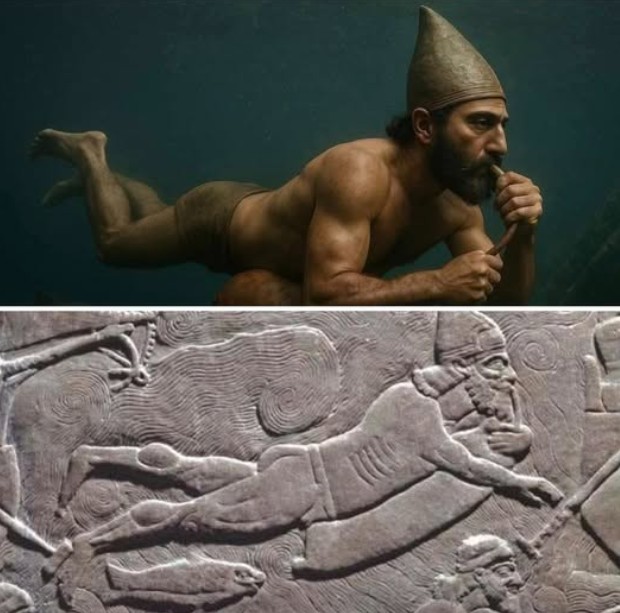The discovery of ancient Assyrian art, especially from the 9th century B.C., reveals fascinating insights into the early use of technology for military purposes. One of the most intriguing pieces comes from a cave in Nineveh, where an image from the era shows figures moving underwater while wearing goatskin jumpsuits filled with air.
This has been interpreted as the oldest known representation of a diving apparatus. The figures appear to be soldiers, possibly using these special suits to help them move through water while staying safe and breathing.

The British Museum also displays a similar item, often referred to as an “incubator,” which dates back to the 8th century B.C. This piece shows how Assyrian soldiers may have used these air-filled jumpsuits during river crossings or underwater missions.
However, there is some debate among experts about the true purpose of these overalls. Some argue that the image actually depicts flotation devices, or inflated trunks, designed to help the soldiers stay afloat, rather than diving apparatus meant for breathing underwater.
The size and design of these flotation devices may not have been adequate for extended underwater use, leading some to question their function as true diving gear. Despite this, the reliefs found in the palaces of Nineveh offer a detailed glimpse into Assyrian military activities, showcasing how advanced their methods were for tasks like crossing rivers and conducting underwater operations.
The narrative style of these art pieces is also a reflection of the importance of military prowess in Assyrian culture, giving us a vivid understanding of their approach to warfare and survival.
